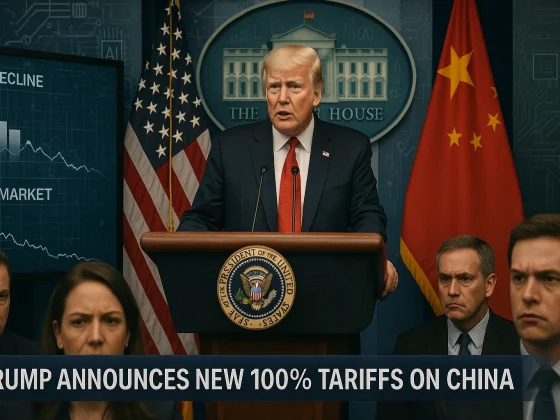Israel has always been of interest to investors. The country has been a tech startup factory for decades.
The country’s economy has proven resilient after two years of wartime spending.
And with a first-phase ceasefire and hostage deal now on the table, the outlines of a broader peace plan are looking realistic.
Markets have started to price a thaw. The question is how far and how fast the peace dividend can flow through growth, inflation, the shekel and asset prices.
What does Israel’s economy look like right now?
Growth has slowed in 2025, but it’s still there. The Bank of Israel projects output to expand at roughly 2.5% this year, with a faster pace pencilled in for 2026 if the ceasefire holds.
Inflation has returned to the target band. The policy rate sits in restrictive territory.
The fiscal picture is still stretched after heavy wartime spending.
The deficit widened last year and remains high this year. Debt has risen, but it stays manageable for a high-income economy.
However, markets are pointing toward an improving risk appetite.
The shekel strengthened through 2025 as ceasefire odds improved, while Tel Aviv equities have rallied to new highs on headlines tied to negotiations.
But credit remains the laggard. All three agencies cut Israel in 2024 and keep a cautious stance.
That keeps the term premium elevated and caps how quickly local bonds can rerate.
Under the surface, bottlenecks remain. The ban on most Palestinian workers created shortages in construction.
Tourism is volatile. Gas output and exports recovered after earlier disruptions, but the risk premium on energy infrastructure is still there.
The technology sector, which is Israel’s bread and butter, proved resilient and continued to attract capital, but hiring and travel were choppy during mobilisations.
What the ceasefire plan actually changes
The first phase of the peace plan is concrete. It starts with a defined pause in fighting, an initial hostage release in exchange for a large prisoner tranche, partial Israeli repositioning away from dense areas in Gaza, and a surge in humanitarian aid.
Monitoring will sit with the United States and regional partners through a joint mechanism.
None of this settles the hard issues, but it sets a clock and a sequence.
The hard issues sit in phases two and three.
They include the scope and timeline of Israeli withdrawal, practical demilitarisation steps for Hamas, who governs Gaza during transition, and how enforcement works if either side breaches terms.
Lists for future exchanges must be finalised.
The plan does one more thing that matters for households and small firms.
It gives officials cover to make small but important policy fixes. That includes rules for work permits.
It includes air links and visas. It includes customs and logistics at the crossings.
These are not big headlines. They are the changes that decide how quickly daily life gets better.
The success or failure of these steps will decide whether investors get a steady peace dividend or another stop-start cycle.
The base case and the peace dividend case
The base case is unchanged until evidence proves otherwise. Growth grinds in the low twos this year, then picks up next year as mobilisations ease.
Inflation trends down toward the midpoint of the target band.
The central bank starts cutting when the disinflation path and risk conditions line up. The deficit narrows only gradually.
The shekel stays firmer than in 2024 but still carries a war premium.
Equities keep a cyclical bid, led by domestic sectors with operating leverage. Local bonds grind tighter but remain sensitive to ratings language.
The peace dividend case looks meaningfully better right now.
If phases two and three take root over the next twelve months, add roughly one percentage point to 2026 growth versus the base path.
Construction ramps up on labour access. Tourism rebounds on restored air links.
Gas exports run steadily. Confidence lifts capex and FDI. Inflation eases as supply frictions fade.
The Bank of Israel can cut 100 to 150 basis points through 2026 while keeping real rates slightly positive.
The deficit trends toward the low to mid threes of GDP as revenues rise and emergency outlays roll off.
Debt stabilises and edges down. Ratings outlooks flip to stable with a line of sight to upgrades in 2026 or 2027.
The final outlook
Following 2 long years of conflict, Israel’s economy has shown resilience and kept its macro frameworks intact.
The first phase of a Gaza ceasefire is real and is already reflected in the market prices.
The larger peace plan will decide whether the investment story becomes a two-year cycle or a two-quarter squeeze.
If phases two and three stick, Israel offers a rare combination next year. Above-trend growth. Falling inflation.
A still positive real policy rate. Improving fiscal metrics. A ratings path that turns from headwind to tailwind.
The path will not be straight. Talks can wobble over withdrawal lines, disarmament steps, and who runs Gaza during the transition.
A northern flare-up would set things back.
But if the current plan holds, the direction is toward gradual normalisation with a real peace dividend that shows up in wages, loan costs, travel, and housing supply.
The practical takeaway is to expect more regular news of exchanges, aid delivery, and troop movements, then a slow improvement in jobs and prices.
For long-term investors, the centre of gravity transitions from emergency spending to rebuilding and steady services demand, with room for measured rate cuts and stronger public finances through 2026.
The post Israel’s economic outlook as Gaza ceasefire plan takes shape appeared first on Invezz


